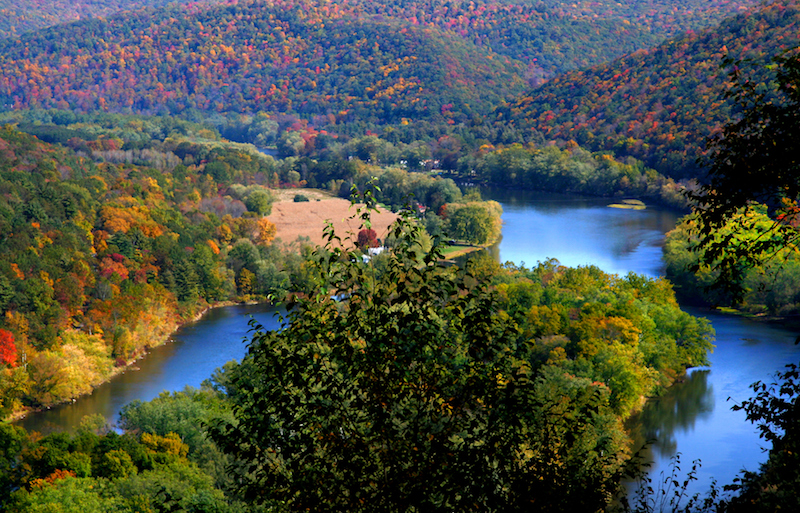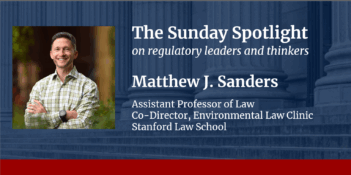
Recent state supreme court decision reaffirms and expands a constitutional duty to preserve natural resources.
The Trump Administration’s decision to repeal the Clean Power Plan, the major Obama-era carbon emissions regulation, has reignited questions about the future of federal environmental protection in the United States. But it also has raised the question: Will state governments step up to fill the void?
Following a state supreme court decision this summer, Pennsylvania might have one more legal tool to regulate the environment. The source of that tool is an unlikely one: the state’s constitution. The Pennsylvania Supreme Court—in a case known as Pennsylvania Environmental Defense Fund v. Commonwealth of Pennsylvania (PEDF)—reaffirmed a broad interpretation of a provision in the Pennsylvania Constitution that enshrines the public’s right to a clean environment, along with the state’s responsibility to preserve the state’s natural resources.
In PEDF, the Pennsylvania Environmental Defense Fund (PEDF) challenged a series of decisions by the state legislature directing natural gas lease revenues from state-owned lands to the state general fund. Historically, Pennsylvania law has required the legislature to direct this revenue—which can amount to millions of dollars—to the Pennsylvania Department of Conservation and Natural Resources (DCNR) for conservation purposes.
The PEDF argued that the legislature’s diversion of funds from the DCNR to the general fund violated Article I, Section 27—also known at the Environmental Rights Amendment. That amendment broadly defines Pennsylvanians’ individual right to an unspoiled environment and the state’s duty to care for its natural assets:
The people have a right to clean air, pure water, and to the preservation of the natural, scenic, historic and esthetic values of the environment. Pennsylvania’s public natural resources are the common property of all the people, including generations yet to come. As trustee of these resources, the Commonwealth shall conserve and maintain them for the benefit of all the people.
In a 4-2 decision, the court ruled in favor of the PEDF, holding that the state must take significant action to “conserve and maintain” the state’s air, water, and other natural assets. It ruled that the state has a fiduciary duty—the highest legal duty of one party to another—to “prohibit the degradation, diminution, and depletion of our public natural resources.”
Since the government raised its gas revenue by leasing state lands, the court reasoned that the money is also part of the “corpus of Pennsylvania’s environmental public trust.” According to the court, the state’s fiduciary duty applies not only to the oil and gas minerals on public lands, but also to the way the state manages revenues from lease agreements on that same property.
Furthermore, the court expansively read the constitutional obligation that the state act “for the benefit of all the people” to mean that the state government must put all trust assets toward natural conservation and maintenance uses, making the diversion of revenue to the general fund for other purposes unconstitutional. The court also rejected the state government’s argument that an expansive reading of the Environmental Rights Amendment would interfere with the legislature’s authority to make economic policy and balance the state budget.
In addition to broadly interpreting the state’s environmental responsibilities, the court bolstered the substance of Pennsylvanians’ individual environmental rights. Despite the state’s contrary argument, the majority held that the Environmental Rights Amendment is self-executing. This ruling means that the state legislature need not pass any implementing legislation before individuals can file legal complaints under the amendment.
The court’s decision represents an abrupt turnaround for the Environmental Rights Amendment. According to John Dernbach, an environmental law professor at the Widener University Commonwealth Law School, the Environmental Rights Amendment largely lay dormant for nearly 45 years after its ratification. Lawyers rarely invoked the provision in legal arguments because it was limited by a burdensome legal test. In 2013, though, the Pennsylvania Supreme Court expanded its interpretation of the Environmental Rights Amendment, overruling portions of a gas drilling law because it violated the state’s fiduciary duty.
In that case, however, only a plurality of justices accepted the more expansive reading of the state’s conservation responsibilities, which left it vulnerable to re-interpretation. According to Dernbach, the 4-2 decision in this summer’s decision signals a more declarative position by the court.
According to environmental lawyers at Ballard Spahr, however, the Court’s decision in PEDF still leaves some open questions about the Environmental Rights Amendment. For instance, the court did not address the extent to which Pennsylvanians’ environmental rights extend to government approval of actions on private lands. Future litigation will also have to establish what the state’s trustee duties look like in situations other than public fund allocation.
Pennsylvania is one of only six states to have an environmental rights provision. The move to add environmental bills of rights to state constitutions began in the 1970s, when the environmental movement first emerged. Six states have added such provisions, all since 1970: Illinois, Pennsylvania, Montana, Massachusetts, Hawaii, and Rhode Island.
Unlike the other five states, though, Pennsylvania’s Environmental Rights Amendment sits prominently in the state’s Declaration of Rights—the state version of the Bill of Rights. This placement, the court held in PEDF, recognized “environmental rights as commensurate with their most sacred political and individual rights,” such as free speech and property rights.
With this year’s decision in PEDF, Pennsylvania’s future environmental quality may now depend more than ever before on constitutional law.



